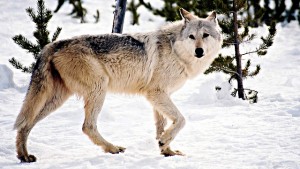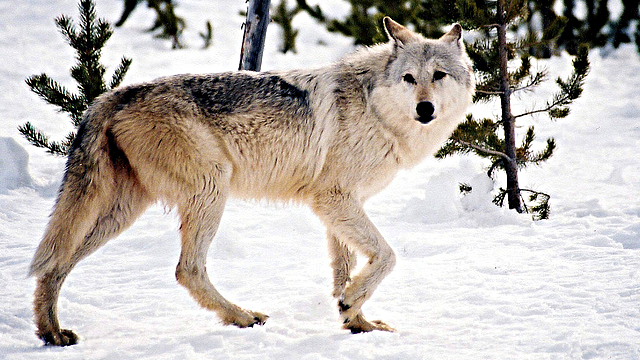
When a gray wolf wearing a GPS collar crossed from Oregon into California in December, it was the first wild gray wolf to tread on California soil since the 1920s. Wolves once roamed throughout California, and some people think packs may prowl the state again. It is debatable whether this lone wolf is a sign of things to come, but if wolves return to California, their role in the ecosystem will be different than it was in times past.
Until the early 1900s, gray wolves (Canis lupus) lived throughout much of North America. They were present in California’s Sierra Nevada Mountains, the Coast Range, and the Central Valley, among other locations. Their range was not well documented. Gray wolves are predators; they hunt in packs and eat all kinds of prey, from small rodents on up to Bison. Their main prey items were Tule Elk and Pronghorn, an animal similar to an antelope.
As California’s Central Valley was converted to agricultural fields and pastures, the number of Tule Elk and Pronghorn dwindled. A shrinking supply of wild ungulates (hoofed mammals, such as elk, Pronghorn, and deer) meant that wolves started going after livestock—with major repercussions. Predator control programs led to extinction of the gray wolf in the lower 48 states. In 1924, the last known wolf in California was trapped and killed in Lassen County.
Gray wolves were added to the Endangered Species List in 1974, shortly after the Endangered Species Act was passed. Then, in the mid 1990s, gray wolves from Canada were re-introduced to Idaho and to Yellowstone National Park.
The gray wolves introduced to Idaho expanded their range, and there are now about 1600 wolves in the Northern Rocky Mountains and Pacific Northwest. In Idaho, there are concerns that the local population is growing too large, and the wolves are getting too close to human habitation. Last year, gray wolves were de-listed in certain areas, where it became legal to hunt them. Five wolves were killed via aerial gunning in Idaho.
